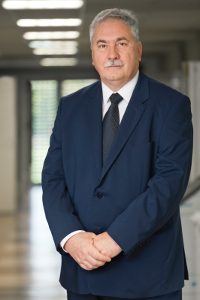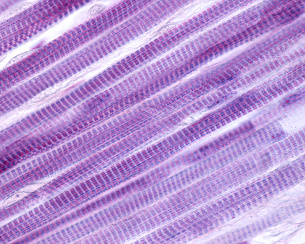Understanding the genetic basis of Duchenne muscular dystrophy (DMD/BMD) has contributed to advances in the development of therapies to treat the effects of DMD. Muscular dystrophies are still considered incurable, so the search for new therapeutic tools has been and is of great importance for the society.
 The team led by prof. dr hab. Ryszard Słomski, already in the 1980s of 20th century, started molecular studies of the dystrophin gene (DMD), the damage (mutations) of which is responsible for the development of the disease.
The team led by prof. dr hab. Ryszard Słomski, already in the 1980s of 20th century, started molecular studies of the dystrophin gene (DMD), the damage (mutations) of which is responsible for the development of the disease.
The biggest does not mean the healthiest. The DMD gene is the largest gene in the human genome and may contains a wide variety of mutations that lead to disease. The course of the disease depends on the place and type of mutation occurrence. Therefore, determining the region in which the mutation is located is crucial, as it enables the selection of an appropriate method of medical treatment. The development of diagnostic methods made it possible to determine whether the defective gene was inherited from the mother-carrier or whether the mutation in a patient with dystrophy occurred de novo. This broadened the spectrum of recipients of molecular diagnostics of the DMD gene to future parents seeking offspring. With time, the diagnostic methods developed by the team of scientists from the Institute of Human Genetics, PAS were introduced as routine procedures, which additionally confirmed the applicability of the research conducted at the Institute. In addition to researchers representing medical sciences, the research carried out at the Institute involves experts from other fields: pharmaceutical, biological and chemical, which confirms the interdisciplinary nature of the research. Precise diagnostics based on molecular tests and properly selected comprehensive therapy (physiotherapy, steroid therapy) are currently the only chance to extend the life of patients suffering from muscular dystrophy. The implementation of appropriate therapy at a young age increases the chance of delaying the occurrence of paralysis of the limb muscles, respiratory muscles and the heart muscle. That is why it turned out to be such an important task of the Institute to promote the current knowledge about this disease among patients and their relatives.
New perspectives
 As part of the development of innovative DMD therapies, we have proposed the use of stem cells to improve the functioning of skeletal muscles in patients with DMD/BMD (Becker muscular dystrophy). The conducted research was based on the procedure of transplantation of skeletal muscle stem cells obtained from healthy, related donors selected for tissue compatibility. Together with the precursor cells of skeletal muscles (myoblasts), the patient’s mesenchymal cells (MSC) were administered, the properties of which were to support the colonization of the muscle tissue and the maintenance of the transplanted muscle cells at the injection site. Monitoring the effects of therapy in patients and the EMG (electromyography) test initially showed the pro-regenerative potential of the experimental approach used. Detailed studies have shown that there are no side effects from cell graft rejection. The next steps taken are based on the use of pluripotent cells obtained by reprogramming them from myoblasts of DMD/BMD patients. Such an approach guarantees obtaining an infinite source of autologous cells capable of differentiating into cells, the damage of which causes the symptoms of the disease. Using genetic engineering methods, we plan to introduce into the patient’s cells the correct version of dystrophin or a protein that mimics it. This strategy aims to supply the affected tissues with new, corrected, autologous cells. In this case, the activation of the fetal dystrophin analog, utrophin, is intended to replace the DMD protein, so that the muscle fibers can regain their functionality.
As part of the development of innovative DMD therapies, we have proposed the use of stem cells to improve the functioning of skeletal muscles in patients with DMD/BMD (Becker muscular dystrophy). The conducted research was based on the procedure of transplantation of skeletal muscle stem cells obtained from healthy, related donors selected for tissue compatibility. Together with the precursor cells of skeletal muscles (myoblasts), the patient’s mesenchymal cells (MSC) were administered, the properties of which were to support the colonization of the muscle tissue and the maintenance of the transplanted muscle cells at the injection site. Monitoring the effects of therapy in patients and the EMG (electromyography) test initially showed the pro-regenerative potential of the experimental approach used. Detailed studies have shown that there are no side effects from cell graft rejection. The next steps taken are based on the use of pluripotent cells obtained by reprogramming them from myoblasts of DMD/BMD patients. Such an approach guarantees obtaining an infinite source of autologous cells capable of differentiating into cells, the damage of which causes the symptoms of the disease. Using genetic engineering methods, we plan to introduce into the patient’s cells the correct version of dystrophin or a protein that mimics it. This strategy aims to supply the affected tissues with new, corrected, autologous cells. In this case, the activation of the fetal dystrophin analog, utrophin, is intended to replace the DMD protein, so that the muscle fibers can regain their functionality.